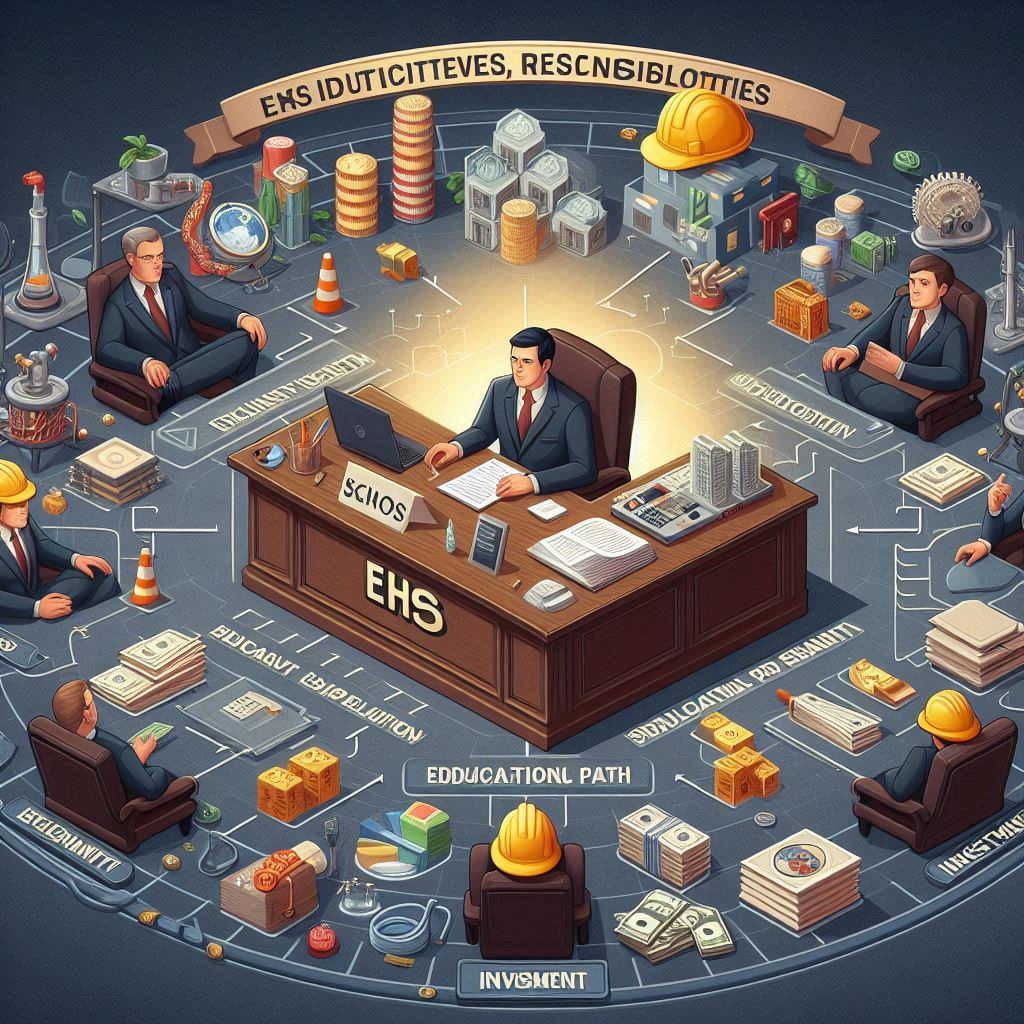
Role of an EHS Executive: Responsibilities, Educational Path, Investment, and Salary
Milan SafetyShare
Role of an EHS Executive: Responsibilities, Educational Path, Investment, and Salary
The role of an Environmental Health and Safety (EHS) Executive is crucial in maintaining a safe and compliant workplace. EHS Executives ensure that organizations adhere to safety, health, and environmental regulations, protecting employees and minimizing environmental impact. Here’s an in-depth look at the role, the path to becoming one, the investment involved, and the salary expectations.
Responsibilities of an EHS Executive
-
Safety Management
EHS Executives design and implement safety protocols to prevent workplace accidents, injuries, and hazards. This involves conducting regular safety audits, inspections, and risk assessments. -
Compliance with Regulations
They ensure that the organization complies with local, state, and international regulations related to environmental protection, occupational health, and safety standards. -
Training and Awareness
One of the key roles is to train employees on safety measures, emergency response procedures, and best practices. This includes conducting workshops, drills, and providing continuous education on workplace safety. -
Incident Investigation and Reporting
In case of accidents or environmental incidents, the EHS Executive leads the investigation to identify the root cause and implements corrective actions to prevent recurrence. -
Sustainability and Environmental Protection
EHS Executives work on reducing the environmental footprint of their organization by managing waste, emissions, and other environmental factors. They may also promote sustainability initiatives, such as energy conservation. -
Data Analysis and Reporting
They collect and analyze safety and environmental data, which helps in setting benchmarks and tracking performance improvement over time. They also prepare reports for senior management and regulatory bodies.
Educational Path and Qualifications
To become an EHS Executive, a combination of formal education, certifications, and practical experience is essential:
-
Educational Requirements
- Bachelor's Degree: Most EHS Executives hold a degree in fields like Environmental Science, Occupational Health and Safety, or Engineering.
- Certifications: Specialized certifications like NEBOSH (National Examination Board in Occupational Safety and Health), IOSH (Institution of Occupational Safety and Health), and OSHA (Occupational Safety and Health Administration) are highly valuable and often required.
- Advanced Degrees: Some professionals pursue a master’s degree in Environmental Health and Safety Management, which can increase opportunities for higher-level positions.
-
Skills Required
- Strong understanding of safety regulations and environmental laws.
- Problem-solving and analytical skills to assess risks and implement corrective actions.
- Effective communication and leadership abilities for managing teams and training employees.
- Attention to detail and data management skills for reporting and compliance tracking.
Investment in Becoming an EHS Executive
-
Education Costs
- A bachelor’s degree typically costs between ₹3,00,000 to ₹10,00,000, depending on the institution and location.
- Specialized certifications like NEBOSH or IOSH can cost anywhere from ₹50,000 to ₹2,00,000 each, depending on the course level and provider.
-
Time Investment
- A bachelor's degree takes 3 to 4 years to complete.
- Certifications like NEBOSH can take several months of study and preparation, with varying levels of complexity based on the course.
-
Additional Expenses
- Pursuing internships, attending workshops, or enrolling in advanced training programs adds to both time and cost. These can range from ₹20,000 to ₹1,00,000.
Salary Expectations for an EHS Executive
The salary for an EHS Executive varies based on experience, location, industry, and company size:
-
Entry-Level
A new EHS Executive can expect a salary in the range of ₹3,00,000 to ₹6,00,000 per annum, depending on the industry and region. -
Mid-Level
With 5-10 years of experience, the salary typically ranges from ₹7,00,000 to ₹12,00,000 per annum. -
Senior-Level
Senior EHS Executives or Managers with extensive experience may earn between ₹15,00,000 to ₹25,00,000 per annum, especially in high-risk industries such as oil & gas, construction, or manufacturing.
Conclusion
Becoming an EHS Executive is a rewarding career for individuals passionate about workplace safety and environmental sustainability. With the right education, certifications, and experience, this role offers opportunities for growth, leadership, and impact within organizations, all while ensuring that employees and the environment are protected.